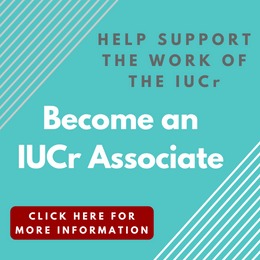
Meeting report
![[Congress Report]](https://www.iucr.org/__data/assets/image/0013/10651/congrep.gif)
Crystal engineering
![[Session speakers]](https://www.iucr.org/__data/assets/image/0017/10673/Image4.gif) Speakers in the session Crystal Engineering (left to right). Seated: Mike Zaworotko, Gautam Desiraju, and Robin Rogers. Standing: Yasu Aoyama, Jerry Atwood, Ian Dance, and Bruce Foxman.
Speakers in the session Crystal Engineering (left to right). Seated: Mike Zaworotko, Gautam Desiraju, and Robin Rogers. Standing: Yasu Aoyama, Jerry Atwood, Ian Dance, and Bruce Foxman.
After witnessing the solar eclipse, the congregation reassembled to hear Y. Aoyama's thought-provoking talk on spontaneous resolution. Although this phenomenon is well-known, it is poorly understood. Aoyoma addressed issues such as relationship of molecular structure to spontaneous resolution, theory of chirality and the possibility of employing spontaneous resolutions on a more general basis. B. Foxman followed with a summarising talk on reactive molecular crystals. He showed that solid state topochemical synthesis can extend beyond 2+2 cycloaddition reactions and gave several examples of thermally induced reactions, rearrangements and isomerisations.
The two final short talks by M. Jaskolski and M. Davidson, dealt with examples of weak or non-conventional C-H···X hydrogen bonding. Jaskolski chose meaningful examples from the biomolecular world mentioning C-H/N-H synthon interchangeability, C-H group acidity and cooperativity in nucleoside structures. In a brief but informative overview, Davidson showed examples of hydrogen bonding to highly activated carbon bases. In his well-illustrated talk, he pointed out that synthons based on these weak interactions control supramolecular structure effectively.
The microsymposium showed how rapidly, and in how many directions this field is advancing, and how it offers tremendous scope to crystallographers and chemists alike. The growth of the field has produced two specialist journals, Crystal Engineering and CrystEngComm.
G.R. Desiraju


